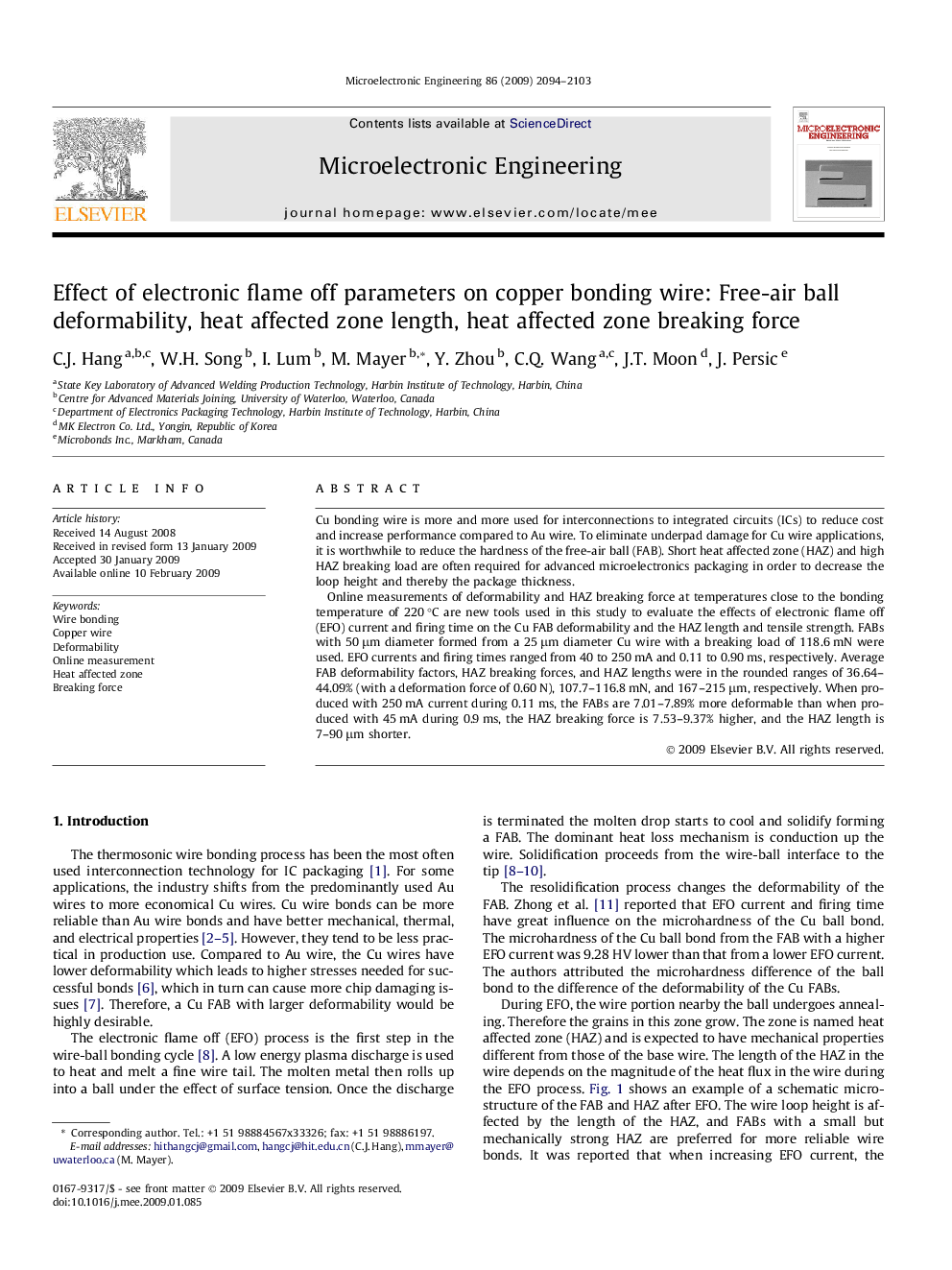| Article ID | Journal | Published Year | Pages | File Type |
|---|---|---|---|---|
| 543348 | Microelectronic Engineering | 2009 | 10 Pages |
Cu bonding wire is more and more used for interconnections to integrated circuits (ICs) to reduce cost and increase performance compared to Au wire. To eliminate underpad damage for Cu wire applications, it is worthwhile to reduce the hardness of the free-air ball (FAB). Short heat affected zone (HAZ) and high HAZ breaking load are often required for advanced microelectronics packaging in order to decrease the loop height and thereby the package thickness.Online measurements of deformability and HAZ breaking force at temperatures close to the bonding temperature of 220 °C are new tools used in this study to evaluate the effects of electronic flame off (EFO) current and firing time on the Cu FAB deformability and the HAZ length and tensile strength. FABs with 50 μm diameter formed from a 25 μm diameter Cu wire with a breaking load of 118.6 mN were used. EFO currents and firing times ranged from 40 to 250 mA and 0.11 to 0.90 ms, respectively. Average FAB deformability factors, HAZ breaking forces, and HAZ lengths were in the rounded ranges of 36.64–44.09% (with a deformation force of 0.60 N), 107.7–116.8 mN, and 167–215 μm, respectively. When produced with 250 mA current during 0.11 ms, the FABs are 7.01–7.89% more deformable than when produced with 45 mA during 0.9 ms, the HAZ breaking force is 7.53–9.37% higher, and the HAZ length is 7–90 μm shorter.
